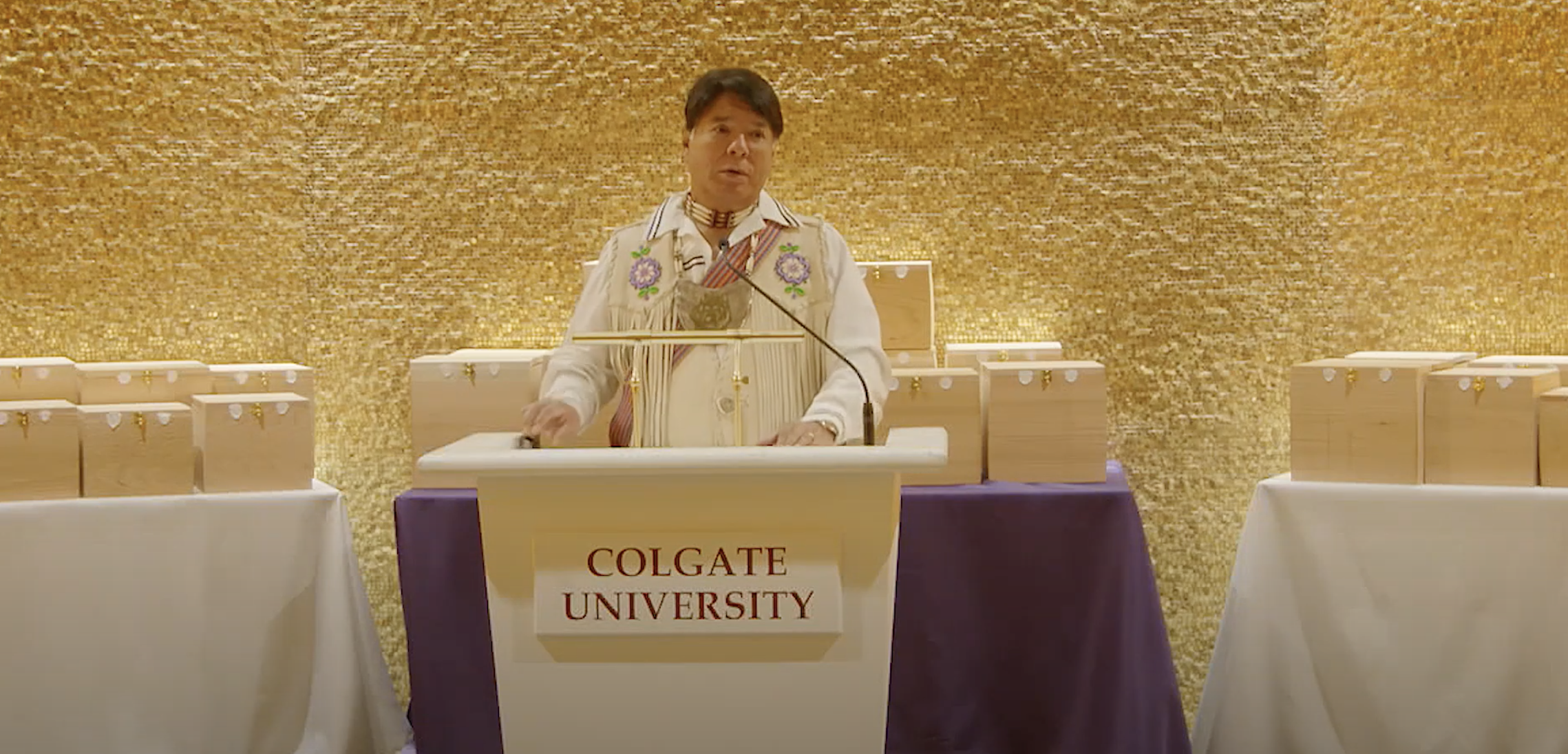
- Details
- By Native News Online Staff
According to a federal document, Colgate University’s The Longyear Museum of Anthropology purchased the objects in 1959 from amateur collector and graverobber Herbert Bigford, who excavated burial mounds across the state. Included among the artifacts are ceramics, pipes, animal parts, tools and beads.
The return marks the university’s fifth repatriation to Oneida Nation since 1995 when federal law required institutions and museums to catalog and begin returning Native American human remains and associated funerary objects. It took 27 years for the university to return every Oneida ancestor and burial object it held.
Oneida Indian Nation Representative Ray Halbritter called the decades-long practices of museums dealing with ancestral remains and cultural artifacts “indefensible” during the transfer ceremony held at Colgate University on Nov. 9.
“These practices have been allowed to continue under the belief that preserving history is of the ultimate importance, without questioning the means of doing so,” Halbritter said. “They assume that it is possible while divorcing the history from the people to whom it belongs, presuming to tell our stories with stolen artifacts in unfamiliar places.”
Colgate President Brian Casey became emotional during the video-recorded ceremony. He said the collection should never have been acquired.
“For this, on behalf of this university, I humbly apologize,” Casey said. “You think of your own families, you think of their stories, you think of their objects. And to think that they were separated—Again, I apologize.”
Colgate is still in possession of at least two ancestors, according to its self-reported data to the federal database in the early 90s.
More Stories Like This
50 Years of Self-Determination: How a Landmark Act Empowered Tribal Sovereignty and Transformed Federal-Tribal RelationsHomeland Tour Offers Deeper Understanding, Appreciation of Chickasaw Roots
Klamath Tribes Seek to Reverse Judge’s Removal in Water Rights Case
Tunica-Biloxi Chairman Pierite Elected President as Tribal Nations Unite Behind New Economic Alliance
NCAI, NARF Host Session on Proposed Limits to Federal Water Protections
Help us defend tribal sovereignty.
At Native News Online, our mission is rooted in telling the stories that strengthen sovereignty and uplift Indigenous voices — not just at year’s end, but every single day.
Because of your generosity last year, we were able to keep our reporters on the ground in tribal communities, at national gatherings and in the halls of Congress — covering the issues that matter most to Indian Country: sovereignty, culture, education, health and economic opportunity.
That support sustained us through a tough year in 2025. Now, as we look to the year ahead, we need your help right now to ensure warrior journalism remains strong — reporting that defends tribal sovereignty, amplifies Native truth, and holds power accountable.
 The stakes couldn't be higher. Your support keeps Native voices heard, Native stories told and Native sovereignty defended.
The stakes couldn't be higher. Your support keeps Native voices heard, Native stories told and Native sovereignty defended.
Stand with Warrior Journalism today.
Levi Rickert (Potawatomi), Editor & Publisher


